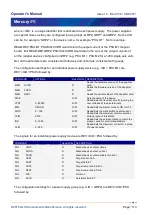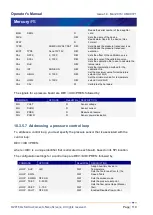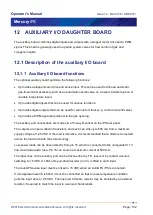
Operator's Manual
Issue 14
/
Mar 2016 / UMC0071
Mercury
iPS
©2016 Oxford Instruments NanoScience. All rights reserved.
Page
125
11 TEMPERATURE SENSOR DAUGHTER
BOARD
This chapter describes the single and dual temperature sensor boards.
11.1 Overview of the temperature sensor board
The iPS can accept the following sensor types:
Negative temperature coefficient (NTC) resistance
Positive temperature coefficient (PTC) resistance
Thermocouple
Silicon diode
Each input can be read at a maximum rate of 10 Hz. The iPS can detect short-circuit inputs,
open-circuit inputs, and inputs that are shorted to ground.
The
Mercury
iPS contains a temperature sensor that is used to compensate for fluctuations in
ambient temperature.
11.2 Installing a temperature sensor board
11.2.1 Fitting the board
If a temperature board is not used to control a heater, it can be fitted in any expansion slot. It is
preferable to locate temperature boards in slots that are physically separated from any heater
boards present.
If a temperature sensor board is to be used to control a heater, it must be fitted in the correct
slot, as shown in the following table.
Heater board output
Temperature sensor board
Slot 1
is connected to
Slot 6
Slot 2
is connected to
Slot 7
Slot 3
is connected to
Slot 8






























